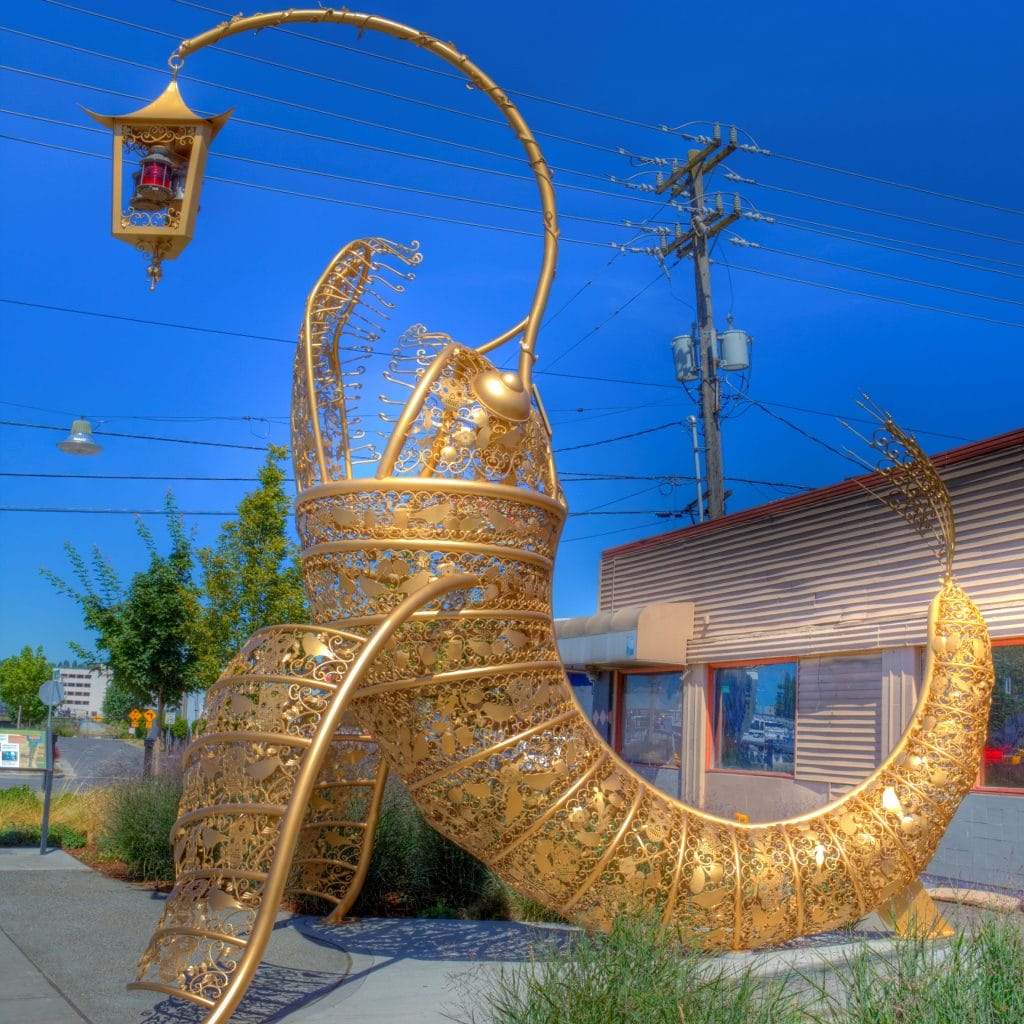“Do what you’re passionate about, and you will
meet people who care about what you do.”
That’s the advice of Jennifer Weddermann, a Tacoma architect who also designs and fabricates metal art. She founded Weddermann Architecture in 2010 in the aftermath of a major recession. Now her certified woman-owned firm is finding its path through the effects of COVID-19.
Weddermann’s notable buildings include the Tacoma Police Department headquarters as well as the popular children’s playgrounds at Point Defiance Zoo and Aquarium and The Farm at SillyVille at the Washington State Fair in Puyallup. She has also designed private homes and the large Hanna Heights Apartments project in Tacoma’s theater district.
Her metal art pieces can’t be missed. A major installation at the entry of the Tacoma Children’s Museum is big, colorful and whimsical. A large Point Ruston sign continues the whimsy,embracing a nautical theme.In Seattle, look for a giant metal angler fish in the South Park neighborhood. She has also installed a new piece of corporate art in the Alki neighborhood.
“Now we’re going for more community-related projects that affect the most people in a positive way,” Weddermann said of her COVID-era work. Weddermann is especially pleased with artistic metal gates designed for the YWCA Pierce County domestic violence shelter. She donated a panel to a Smithsonian exhibit organized to show how beauty impacts healing.
Architectural design can be desk work. That’s not the case with the metal art, which can involve extensive physical labor. Why metal as a medium? In a furniture design class in graduate school, Weddermann discovered that her limited budget wouldn’t cover the cost of expensive wood. To create her graduate class project, she took her $10 to a junk yard and loaded a cart with a pile of rolled steel pieces—a lot of pieces.That experience affected her choice for her future artistic work. “Steel is cost effective. If I make a mistake, I grind it out,” Weddermann explained. “Steel is strong and fluid with a lot of potential.” “That pile of metal activated the creative side of my brain,” she said.Now the community benefits from her creativity. by Emily Happy
